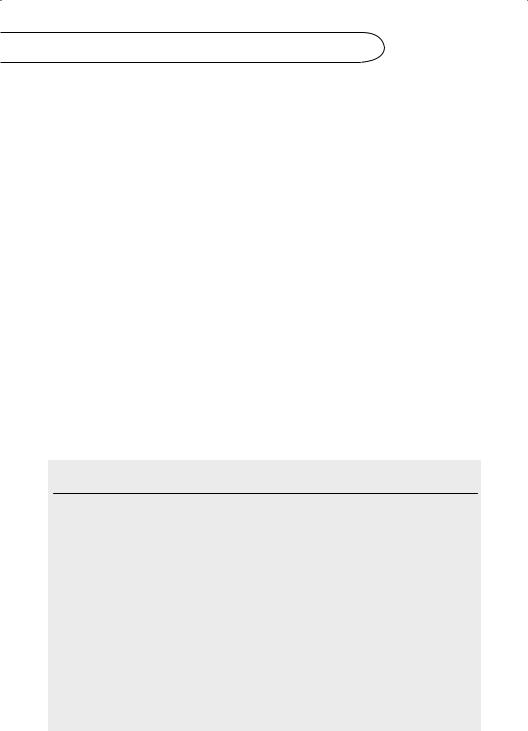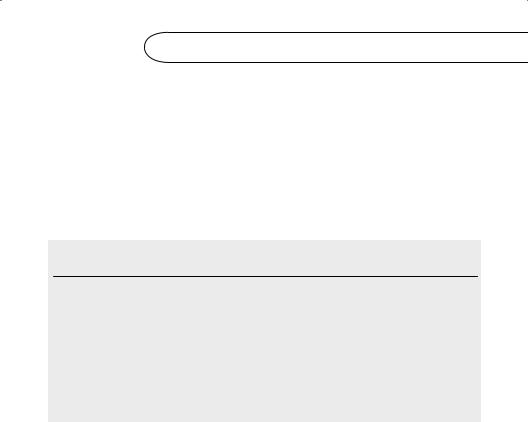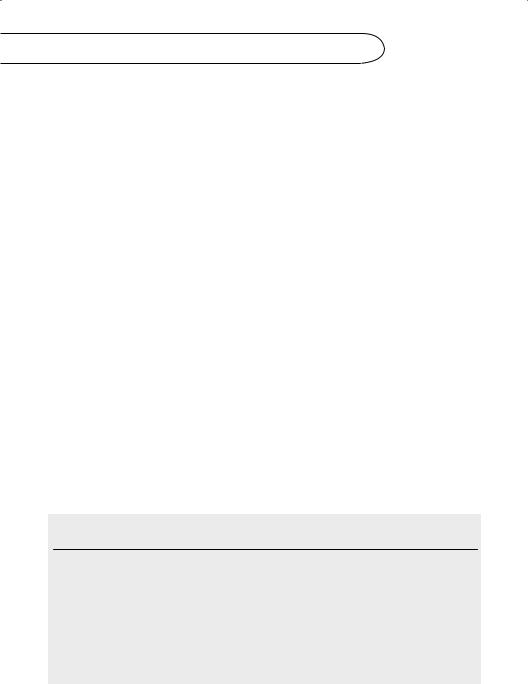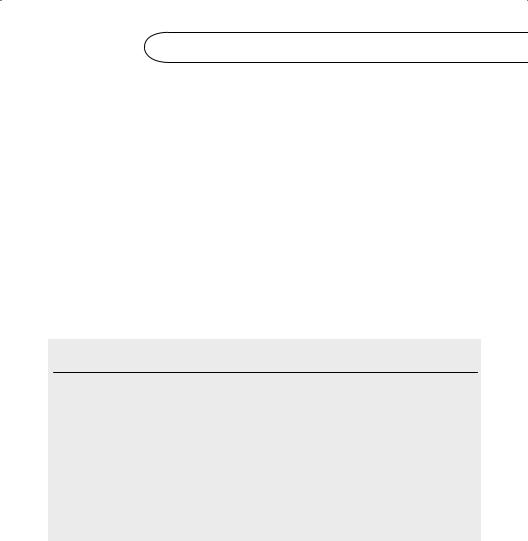
- •Contents
- •Series Preface
- •Acknowledgments
- •RATIONALES UNDERLYING NEPSY AND NEPSY-II
- •NEPSY DEVELOPMENT
- •NEPSY-II REVISION: GOALS AND DEVELOPMENT
- •COMPREHENSIVE REFERENCES
- •CONCLUDING REMARKS
- •APPROPRIATE TESTING CONDITIONS
- •TYPES OF ASSESSMENTS
- •ASSESSING CHILDREN WITH SPECIAL NEEDS
- •OTHER ADMINISTRATION CONSIDERATIONS
- •SUBTEST-BY-SUBTEST RULES OF ADMINISTRATION
- •COMPUTER SCORING
- •PREPARATORY TO SCORING
- •ORDER OF SCORING
- •STEP-BY-STEP SCORING
- •TESTS WITH COMPLEX RECORDING AND/OR SCORING
- •QUICK-SCORING: DESIGN COPY GENERAL (DCG)
- •DESIGN COPYING PROCESS (DCP) SCORING
- •OVERVIEW OF SUBTEST SCORES
- •SUMMARIZING NEPSY-II SCORES
- •CONCLUDING REMARKS
- •GOALS OF INTERPRETATION AND IMPLEMENTATION OF GOALS
- •STEP-BY-STEP INTERPRETATION OF NEPSY-II PERFORMANCE
- •INTRODUCTION
- •TEST DEVELOPMENT
- •STANDARDIZATION
- •PSYCHOMETRIC PROPERTIES
- •ADMINISTRATION AND SCORING
- •INTERPRETATION
- •OVERVIEW OF STRENGTHS AND WEAKNESSES
- •THE NEPSY-II REFERRAL BATTERIES
- •DEVELOPMENTAL DISORDERS AND NEPSY-II
- •EVIDENCE OF RELIABILITY IN NEPSY-II
- •CONVENTIONS FOR REPORTING RESULTS
- •RELIABILITY PROCEDURES IN NEPSY-II
- •CONCLUDING REMARKS
- •CASE STUDY #1: GENERAL REFERRAL BATTERY
- •CLINICAL IMPRESSIONS AND SUMMARY
- •PRELIMINARY DIAGNOSIS
- •RECOMMENDATIONS
- •DIAGNOSIS
- •Appendix: NEPSY-II Data Worksheet
- •References
- •Annotated Bibliography
- •About the Authors
- •Index

54 ESSENTIALS OF NEPSY-II ASSESSMENT
OTHER ADMINISTRATION CONSIDERATIONS
Examiner Practice for Certain Tests
Although this is not true of the majority of the NEPSY-II subtests, certain subtests may be difficult to administer and should be practiced before the first administration. The following subtests need practice before the clinician attempts to administer them: Auditory Attention and Response Set, Inhibition, Memory for Designs, Imitating Hand Positions, and Manual Motor Series. It is recommended that the clinician practice these at least twice with normally developing children and five times with children who have various impairments before administering the test for clinical purposes. See Caution box concerning Subtests Requiring Examiner Practice. Detailed administration directions for each of them can be found in the manual. In particular, the directions designate and show illustrations of specific hands and fingers for the Imitating Hand Positions subtest and the order of movement for Manual Motor Series. If you need time to form the hand positions you may do so on your lap and bring the hand up to the table surface, so the child does not watch you forming the hand position. If needed, for the examiner’s benefit, the manual motor movements can also be started in his or her lap and then brought to the table surface when the rhythm is established.
C A U T I O N
Subtests Requiring Examiner Practice
Auditory Attention and Response Set
•Inhibition
•Memory for Designs/MD Delayed
•Imitating Hand Positions
Manual Motor Sequences Clocks (scoring)
Practice each at least twice with typical children and five times with children who have various impairments before administering the test for clinical purposes. Detailed administration directions for each of them can be found in the Administration Manual and in this chapter of the present volume.

HOW TO ADMINISTER NEPSY-II 55
Start and Discontinue Rules
On some of the subtests of NEPSY-II, all items are given to all children. Other subtests have start rules that allow testing time to be shortened for older children, and reverse rules that allow the clinician to go back to earlier items for children unable to succeed at their age level. Most NEPSY-II subtests have Discontinue Rules. Icons are provided on the Record Form to remind the examiner of these points. (See Rapid Reference 2.8.)

 Rapid Reference 2.8
Rapid Reference 2.8
Subtest Administration Rules
Start points, reversal rules, discontinue rules, and stop points are discussed and illustrated in the NEPSY-II Administration Manual, pp. 21–26.
Completing the Record Form is discussed and illustrated in the Administration Manual, pp. 29–33.
A summary of each subtest’s rules can be found in the Subtest-by-Subtest Rules of Administration section on p. 59.
Recording Responses
There are separate Record Forms for ages 3 to 4 years and 5 to 16 years. Responses are recorded for each test on the appropriate Record Form. Correct responses are printed in violet on the Record Form for ages 3 to 4 and in green on the Record Form for 5 to 16. After the primary subtest scores are computed, they can be plotted on the child’s profile, located on the front cover of the Record Form. This is a helpful graph to use when discussing strengths and weaknesses with parents. There are numerous process or contrast scores that provide additional diagnostic information. The examiner is encouraged to use these processes and contrast scores, but they are optional.
Obviously, on all subtests recording of responses is essential, but on a number of subtests, the clinician records information in a way that will allow error analysis later. For example, on Word Generation, the clinician could just tally the number of correct words in each category, because the number of words that the child produces in each category within the time limit is the variable being measured. On the other hand, recording the actual words

56 ESSENTIALS OF NEPSY-II ASSESSMENT
helps determine if a word is repeated and permits error analysis later. The latter may reveal faulty or particularly efficient strategies or patterns for the child’s access to words. Also, on List Learning, when the examiner records the child’s words in the order of recall, valuable diagnostic information can be analyzed later. The clinician can see if the child was clustering to aid memory recall. Furthermore, the examiner can also see the type of clustering used, such as semantic (boat, water, fish) or phonemic clustering (window, water, winter). Further, one can see if there is a primacy (most words recalled from the first of the list) or recency effect (most words recalled from the last part of the list).
Behavioral Observations
Recording behavioral observations, both formally (when Behavioral Observations are designated on a subtest) and informally (when the clinician observes interesting aspects of the child’s behavior), is necessary for the neuropsychological evaluation. These observations often provide essential diagnostic information about how a child is, or is not, able to perform a function. For many subtests, Behavioral Observations are specified that are specific to the subtest. Some of these are quantifiable and you may compare the scores to base rates in the norm sample (see NEPSY II Administrative Manual). After testing is complete, such Behavioral Observations are recorded as present or absent (Y or N) on the inside front cover of the Record Form, while others are totaled. (See Rapid Reference 2.9.)

 Rapid Reference 2.9
Rapid Reference 2.9
Formal Behavioral Observations That Are Tallied or Recorded
•A list of Behavioral Observations that are tallied or recorded from each domain appears in the Administration Manual on p. 34.
•Summarizing scores on the Behavioral Observation page of the Record Form is found on p. 33 in the Administration Manual.
Also subtle difficulties may be observed that are not reflected in low scores but rather as unusual effort. There are also general observations that psychologists are

HOW TO ADMINISTER NEPSY-II 57
accustomed to making during testing sessions. These include, but are not limited to, the following general questions:
•Does the child exhibit signs of anxiety or stress?
•How does the child cope with failure, is he or she easily distressed, or confident, and can the child be easily reassured?
•Is the child able to work attentively or does he or she present signs of poor attention?
•Does fatigue or loss of motivation or attention affect performance?
•Is the child impulsive and/or uncritical with respect to own performance?
•What is the child’s general tempo in working?
•Does the child appear to have word-finding problems, attempting to recall words through circumlocutions?
DON’T FORGET
Your Observations are a part of a neuropsychological evaluation. Watch how the child performs the task and record it. For example:
•How was the task accomplished?
•What strategies were used?
•Did the child verbally mediate the task?
•Record any listed Behavioral Observations for each subtest.
•Record your own observations and impressions.
How the child approaches a specifi c task will aid formulation of intervention.
Timing and Testing the Limits
Many of the NEPSY-II subtests are untimed, but where timing limits are required, this will be noted at the top right of the subtest instructions in the Record Form under Time Limit (Timing). Under the heading Materials at the top of each subtest, stopwatch will appear if the test is to be timed. The Stimulus Books show a stopwatch icon for the timed subtests. The clinician should record the time rounded to the nearest second. A general timing guideline of a maximum of 10 seconds per item serves to keep the pace from slowing to the point that the child loses interest and to avoid causing a child distress when he or she cannot do an item or is unwilling to perform.

58 ESSENTIALS OF NEPSY-II ASSESSMENT
If a child is actively engaged in a task, but it is apparent that he or she will not finish within the time limits, the examiner may wish to test the limits. Record the time when the time limit has expired and the child’s response(s) up to that time, but do not stop the child or the stopwatch. Allow the child to complete the task, to a reasonable limit, without saying anything about the time being up. Record the additional elapsed time-to-solution for qualitative analysis later. In this way, the clinician will have the information needed to score the timed subtest, as well as the ability to judge how well the child might have performed without time limits. The latter information can be discussed clinically in the report and may contribute to the interventions recommended.
Prompting, Querying, Self-Corrections, and Item Repetition
As a general rule, prompting (“Keep going,” or “Let’s give it another try”) is permitted on NEPSY-II in order to ensure the child’s best performance. The clinician should note the prompt (“Tell me more”) with P. Some subtests have specific directions for prompting that appear in the manual, Record Form, and Stimulus Books to which the examiner should adhere. Self-corrections are, in general, allowed on NEPSY-II when they are made before the next item is administered.
The clinician should record SC beside the item and write in the correct response. If repetitions are not allowed on a subtest, this will be designated in the manual and Stimulus Books. The clinician should note R or Rep on the Record Form. On the Phonological Processing, Comprehension of Instructions, and Sentence Repetition subtests, asking for repetition is recorded as a Behavioral Observation to be compared to cumulative percentages for age in the standardization population.
Teaching the Task
The NEPSY-II provides teaching items on many subtests. Directions for these are in both the Administration Manual and the Stimulus Books. Unless otherwise specified, the teaching items are presented once, but the child may practice as much as needed to be sure he or she understands the task before the subtest actually begins. If a task actually has to be modified from the standardized directions or format due to the child’s disability, the clinician should note the modifications and the reasons for them on the Record Form. The child’s performance should be evaluated clinically, and the norms should be used as guidelines and interpreted cautiously.
